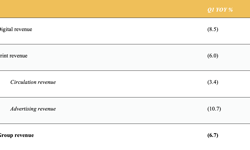The audience is huge and its appetite for content nearly insatiable. Here are the numbers. According to the media measurement firm comScore, more than 80% of the total UK internet audience watched online video during January 2009. The total UK audience online watched over 280 million hours of video content. Over 23 million viewers in the UK watched over 2 billion videos on YouTube.com alone. This totals to approximately 86 videos per viewer. Beyond these staggering statistics, there are other compelling branding reasons why publishers should consider adding video to their online offerings.
Online video offers solutions for publishers challenged with creating a personality for their brand or increasing publication engagement and loyalty in an increasingly fragmented media ecosystem. Today, readers have many options for how and where they can consume information. Publishers must go where the readers are, and right now they are watching video. Today, this means that publishers must offer media in multiple formats that are consumable on a variety of devices. The reader of the future will expect to see media delivered to a telephone as well as on a computer monitor at a desk. There has been a rapid growth in the number of viewers looking at video on their phones. This appears to be the wave of the future. Early movers can expect to achieve early-mover advantage.
Video is a compelling media option in that it simultaneously appeals to two senses by combining sound and motion. The growth and consumption of video on the web is far outstripping that of audio, podcast, content which appeals to just one sense. Both present publishers with opportunities to extend not only the reach of their own publications but also their footprint on search engines.
Publishers can access audiences that may not yet be familiar with the publication by ensuring that their video and / or audio content is available through search engines. By using a spokesperson or host, it is relatively easy to give the content a personality which by extension accrues to the publication. By doing this, the publisher can gain improved engagement with the audience and create an emotional connection with the viewer. A video spokesperson can fulfil the same role as a columnist or correspondent in increasing engagement. These human voices and faces add a human personality and dimension to publications.
The Technology Choices
There are several delivery options for publishers choosing to add audio or video. A key decision that must be made particularly before adding any video is whether to host it on the publication’s site or simply post branded video on a video-sharing site such as YouTube. If you choose to host the video on your own site, you should make sure that you have adequate available bandwidth to deliver the video seamlessly to your viewers. By posting the video to video-sharing sites, you transfer the bandwidth requirements to YouTube or another video-sharing site. Similarly, before adding extensive podcast / audio content, do make sure you can withstand the bandwidth requirements.
Hosting video and audio on your own site has clear benefits. If your hosted content is optimised and can be found on search engines, it can generate more traffic that goes directly to your website. By hosting your own multimedia content, you maintain complete control over any text that accompanies the video / podcast landing page, the encoded metadata used to identify the media and any advertising and monetisation that you choose to accompany it. Having control over the advertising revenues and monetisation opportunities is a key argument for maintaining your own hosted multimedia.
Many publications, however, have chosen to use a combined strategy for video. They make their videos available on their own site and post them to video-sharing sites. With universal and blended search integrating video into the search results, you can increase your search footprint by having the video available and optimised for both the sharing site and your own site – yielding twice as many opportunities for the same piece of content to appear. The added reach available from the video-sharing sites is a compelling argument for using a combined approach.
Research done by Tube Mogul on how viewers find video has shown that most viewers are uncertain as to where to look to find video content. Their favourite solution is to navigate to a video site such as YouTube and then simply surf around looking for videos on topics that appeal to them. This is the method used by 45% of video viewers. Slightly more than 10% of viewers rely on search engines to find video content. These behaviours argue for a combination strategy.
Whether you choose to host your video on your own site or post it to a video-sharing site or use a combination strategy, you must optimise your video if you expect it to garner a substantial numbers of viewers. Recent research by Tube Mogul has shown that the majority of videos receive less than 500 views. It is the rare video that goes viral and has tens of thousands and even millions of views. It is important to keep these viewing stats in mind when planning and budgeting for adding video. Most publications have found that filming multiple videos in a single shoot lets them control costs. If you want to garner more views for your videos, you must be prepared to work to get them. You must make sure that your videos are both optimised and socialised.
Optimising to Increase Reach
Optimising video or audio content for search engines requires the application of basic search engine marketing principles with a few added tactics that relate to each. Since most video viewers are not sure how to find video on the web, part of your strategy must include how you will announce the availability of your video content. As more video is optimised for search engines, we can expect that users will turn more to search engines as a source for finding new video content. On the other hand, as more content is optimised, publications will have to work harder to get and keep their content visible.
Podcasts present different challenges. Many listeners actually prefer to listen to the podcast directly from the website and do not download the audio; however, there is a substantial number who will download an audio file and listen at their convenience. This means that the page which presents the content must be findable via search and offer options for listening and downloading.
The first and most important step is to create compelling content. With quality video or audio content to work with, the majority of the optimisation tasks are similar to optimising for textual web content. For example, keyword research is essential. It is a good idea to do your keyword research before creating your content. In some instances, your keyword research will suggest content areas that are of greatest interest to your audience.
When you host the video or audio content on your site, make sure that each video or podcast has its own landing page. Each landing page must have a keyword rich title and description that provide information about the multimedia. Avoid clever or cute titles that might mislead or obscure the real content. A brief summary or transcript of the content covered will also provide search engines with valuable keyword-rich information upon which to judge the content’s relevancy to search queries.
The audience will also want to know what is in the video or audio before they commit to playing it. Typically, users will want to know the length as well as a date when it was created and who appears in the segment. For podcast content, be sure to include a download option and the size of the file.
Today, best practice for video requires that you include a video player along with the video. It is advisable to avoid pop-up players. Because there is no set standard for video on the web at this time, it is also advisable to provide video in several formats particularly if you expect users to download the video for viewing on another device.
If you offer multiple videos or podcasts on your site, you will want to be sure to use video sitemaps and media RSS feeds to distribute your content to search engines and subscribers. You will want to maintain separate RSS feeds for audio and video content.
Optimising video for video-sharing sites is slightly different. Some of the tactics required for optimising content for video-sharing sites are similar to those used with hosted video. It is important to use accurate titles and descriptions to guide users and trigger search results. With YouTube, it is important to include tags to help identify your content. Use tags as though they are keywords.
Not only must you create compelling optimised content, but you also need to create an optimised video channel. Your YouTube channel should be a branded destination for your publication’s video viewers. Creating a well socialised video channel on YouTube requires some concerted effort, for you will need to seek subscribers and ratings for your videos as part of the channel development process.
Distribute and Socialise Your Content
The preferred method for distribution of video and podcasts is RSS. When building a feed for video, don't forget to include a thumbnail image of your choice. Google’s Feed Burner offers publishers options for managing their RSS feeds and their distribution. Tube Mogul is another option for managing the distribution of video content to video-sharing sites. No matter what distribution method is used, you must go beyond simply distributing and posting your content. It must be socialised.
When sharing video content on YouTube, it is important to become part of the community. To do this, you will need to rate videos, seek ratings for your own videos, make comments on videos, and participate fully in the online community. This is just one part of the socialisation process.
Make sure that you include links to your video / audio content when using any word-of-mouth, marketing communications or public relations tactics to promote your publication and its multimedia content. Use the power of the content itself to draw viewers and listeners via social networking sites.
Make it easy for your own subscribers to find the multimedia content by featuring prominently on your website links to the content. Making it easy for subscribers to share your multimedia content should be part of your audience development efforts. If you focus on optimising your multimedia for search, distributing it using RSS and socialising it on social networking sites, you will grow your audience and extend the reach of your publication to previously untapped audiences.










